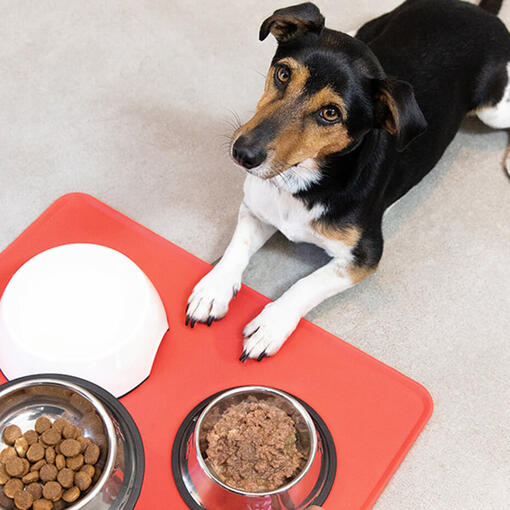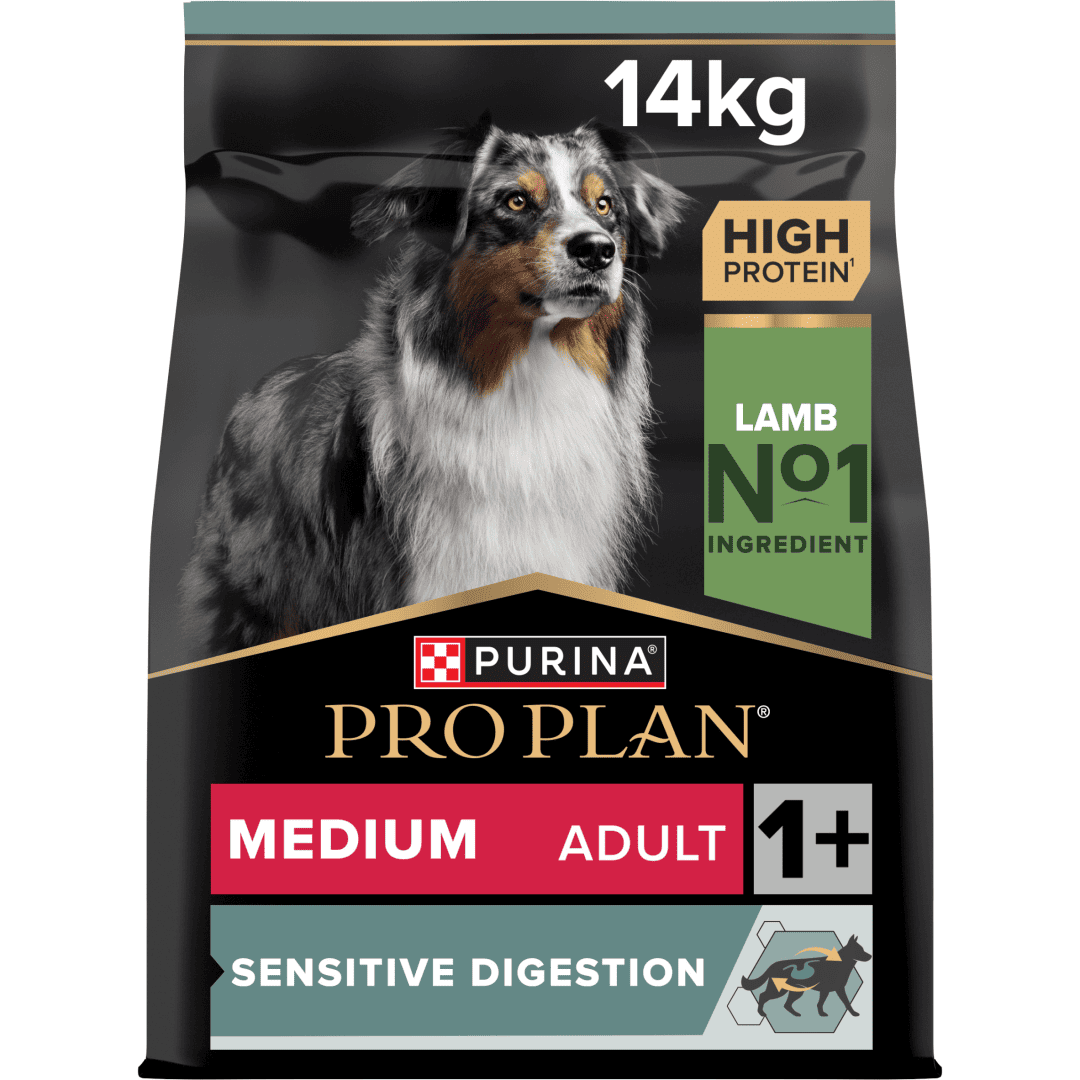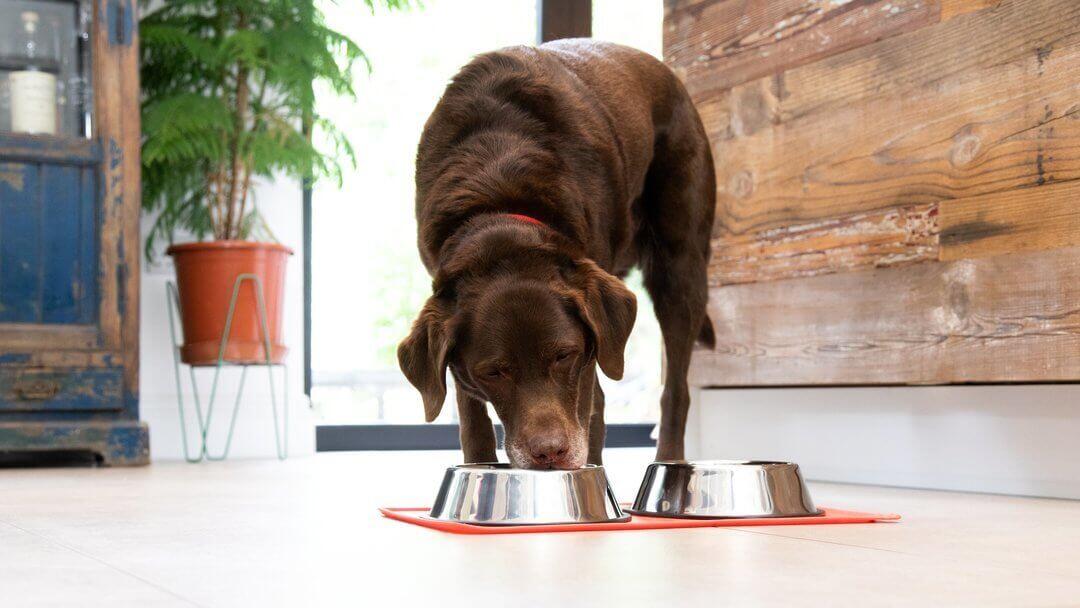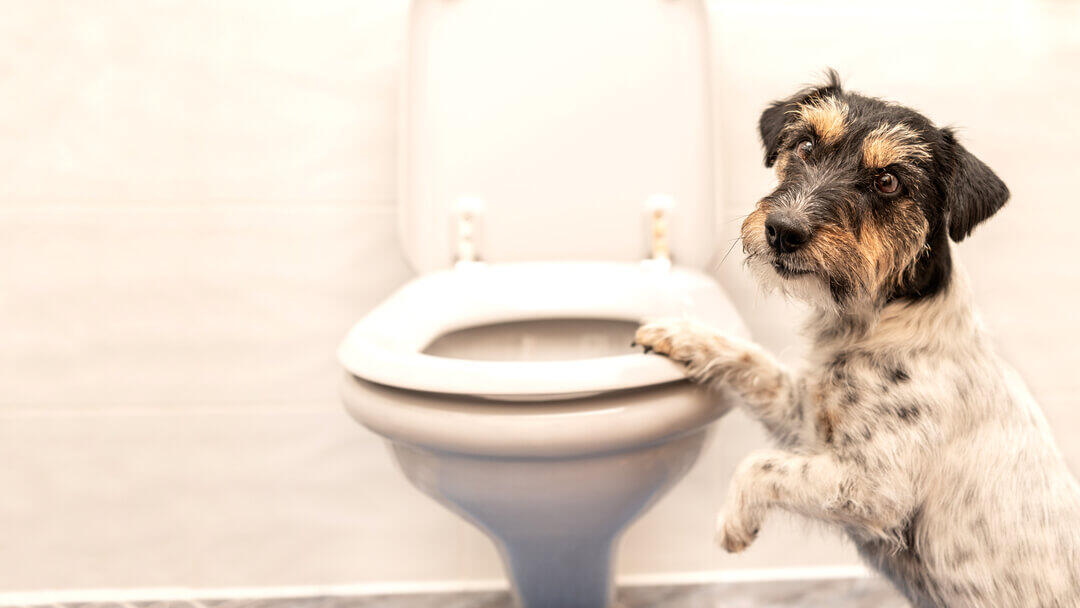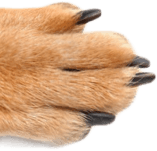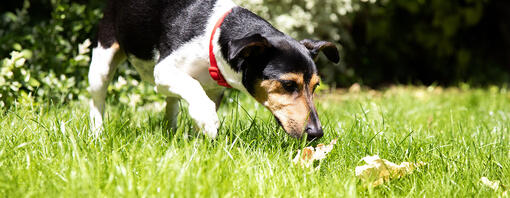
As a dog owner you can sometimes find yourself obsessing over dog poop. From the colour of it, to the shape and consistency, you may be wondering what's normal. Our guide to dog poop aims to answer all of your questions and more.
Every dog poops, this is true. Poop can seem like an unremarkable thing; but did you know that your dog’s poop can be a great indicator of your dog’s overall health and even prevent some health issues down the road if you know what to look for? That’s why over at Purina (and at your vet’s office!) we like to get personal about the poop-scooping experience. The next time you’re out on a walk with your dog, take a good look at your dog’s poop – this way you’ll be able to get a good whiff of the important information that your dog is trying to tell you.
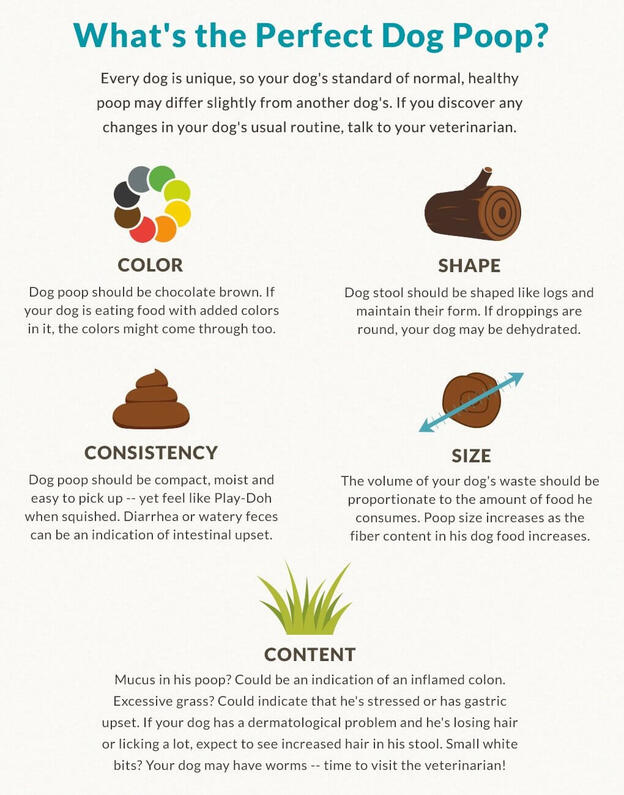
What ‘should’ dog poop look like?
Every dog is unique, so your dog’s standard of normal, healthy poop may differ somewhat to that of another dog. Keep tabs on your dog’s usual routine and poop habits so that if something changes, you know what to tell your vet. Remember: if you discover any changes in your pup’s normal routine, talk to a veterinarian.
Dog poop should be chocolate brown. If your pup is eating food with added colours in it, some of these may also come through in your dog’s poop. Scroll down for our colour chart and get more info on what the different colours mean.
Hey, there’s a reason that turds are sometimes known as logs! Dog stools should be log-shaped and maintain their form. If droppings are round, it’s possible that your pup might be dehydrated.
Poop size is related to the amount of fibre in your dog’s diet. Poop size increases as the fibre content in your pup’s dog food does. As a general rule, the volume of your dog’s waste should be proportionate to the amount of food that they are eating. If this doesn’t seem to be the case, consider flagging this with your dog’s vet.
What’s in my dog’s poop?
When you go to pick up your dog’s poop, eyeball what seems to be going on in there. Mucus in dog poop could indicate an inflamed colon, whereas a lot of grass could mean that they’ve been grazing on too much grass or have a gallbladder issue.
Dog poop consistency
When you bend down to scoop your dog’s poop, and feel its consistency through the plastic bag, take note! Dog poop should be compact, moist and easy to pick up – feeling a bit like Play Doh when squished. Dog diarrhoea or watery faeces, as an indicator of intestinal upset, can be a sign that something is amiss with your dog’s tummy. And if your dog’s poop is hard or dry, it could be a sign of dog constipation. If you notice that the consistency of your dog’s poop seems ‘off’, make sure to discuss this with your vet.

Causes of dog constipation
Dog constipation can be caused by several factors:
- Too much or too little dietary fibre.
- Not enough exercise.
- Blocked or infected anal glands.
- Excessive self-grooming (if there is dog hair in the stools).
- Not enough grooming (if there is matted hair around your dog’s back end).
- Objects like gravel, bones, plants or plastic caught in the intestinal tract.
- A side effect of medication.
- Dehydration (a possible symptom of more serious diseases).
Why is your dog pooping water? Causes of dog diarrhoea
Watery poop in dogs can be caused by many factors. Runny poop can be a result of stress, medication, eating new food or food that’s intended for humans. It can also be a sign of infection or an underlying condition.
There are also many things that can cause dog diarrhoea:
- A stressful event like adopting a new dog, the arrival of a new family member, moving home etc.
- Quickly switching to a new dog food.
- Eating food designed for humans.
- New medication.
- Drinking water from a puddle or stagnant pond.
- It could also be an indicator of another disease or infection.
If your dog has diarrhoea or constipation for a prolonged period of time, speak to your vet.
Dog poop colour chart
Take a look at our handy dog poop colour chart below to find out more about what the colour of your dog’s poop means.

This is just the colour that your dog’s poop should be – a healthy chocolate brown. This is a good sign that your dog’s tummy is healthy and doing what it should.
Green dog poop can mean that your dog has eaten too much grass or has a gallbladder issue. You should arrange an appointment with your vet for proper diagnosis.
Orange or yellow dog poop can point to a biliary or liver issue, and is definitely something you should raise with your vet. If your dog has yellow diarrhoea, this could also be a sign of ingredients in their food such as rice or chicken that is giving them a bad stomach.
Red streaks in your dog’s poop can indicate that there is blood present. If you see blood in dog stool, it’s advisable to check your dog’s anus for cuts to investigate where the blood may be coming from.
Black dog poop can be a sign of bleeding in the upper GI tract. Talk to your vet as soon as possible.
Greasy, grey dog poop can indicate a biliary or pancreatic problem. Take them to the vet as soon as possible.
White specks in dog poop can point to the presence of worms. Ensure you’re following a regular deworming schedule and if you’re unsure, consult your vet.
There is blood in my dog's poo, what should I do?
Sometimes blood in your puppy's poo (showing up as red streaks in dog poop, for instance) can be a sign of a slight tear or trauma around their bottom or in their rectum. This will be just a tiny trace usually. Check your dog's bottom to see if anything is obvious. Bright red blood in dog poo indicates fresh blood and sometimes this can be due to problems in the bowel. Sometimes, but not always, the poops may be runny too. It's best to have any blood checked out by your vet. Bring along a sample of the poo if you can.
Why does my dog eat poop?
When dogs eat poop, this is also known as coprophagia. But why do they decide to chow down on their own faeces? Well, to be honest, experts still don’t quite know. Some theorise that your dog eating poop can be a sign that they are trying to get more nutrients out of what they have already eaten, but there are currently no studies to confirm this. Maybe it just smells and tastes good to our dogs – there’s no accounting for canine taste…
How to stop your dog from eating poop? As with many things, you may need to try a little trial and error – but we recommend cleaning up dog poop immediately, teaching your dog the ‘leave it!’ command, and spraying taste deterrents on the poop. Find out more in depth about coprophagia and preventative measures. Of course, it’s always advisable to talk to your vet if you have any questions.
Why is my dog scooting on their bum?
Bum scooting can be normal for dogs, especially if they’re having trouble with loose stools. However, as we’ve said, it’s important to keep a close eye on your dog’s behaviour and their stools. This way, if your dog seems uncomfortable, and bum scooting becomes a routine behaviour beyond the initial bum wiping post-poo, you can flag this to your vet. Your dog scooting their bum can point to their suffering from impacted anal glands.
There is blood in my puppy’s stool, but they are acting normal
If you notice blood appearing in your puppy’s stool, then you should contact your vet. Puppy’s immune systems are a lot weaker than that of a fully grown dog, so they are much more susceptible to illness and infections.
Sometimes you may notice a small amount of blood in your dog’s stool. If your dog hasn’t been showing any signs of distress or discomfort and appears to be its normal self, then it’s best to just keep a close eye on them.
If you notice that more blood appears in their stool, or your pet seems unwell, then you should speak to your vet.
Why does my dog’s poop change after he starts a new food?
If there comes a time when you have to change your dog’s food, it may affect their poop – at least for a while. Just like we humans experience a period of adjustment when we eat a new cuisine in a foreign country, your dog experiences something similar when you start them on a new food.
To help avoid dietary upset, make a slow, measured change from his old food to his new food over a 7-10 day period.
My dog has had diarrhoea from the day I've got them, is this normal?
If you have a new dog, it’s important to remember that moving to a new house is a stressful time not only for us, but for your new pup. Being in a new environment can lead to stress and tummy upsets. Make any diet changes very gradually over a week to 10 days and seek your vet's advice if things aren't settling down.
Stress diarrhoea in dogs
Dogs can suffer from diarrhoea just like we do. Stress diarrhoea in pets is a common response to stress or anxiety – that is, your dog’s diarrhoea might happen because they’re worried about something. Examples of stressful situations that can trigger digestive problems in dogs are wide ranging – and it depends on what your dog finds particularly anxiety-inducing!
Stressful situation that may trigger stress diarrhoea in dogs include:
- Adoption
- Boarding
- Separation from you
- Changes in your household or their environment
- The introduction of a new pet or family member, even if they are destined to become best friends!
Your dog will be at less risk of stress diarrhoea if you ease them into changes gradually and make transitions as smooth as possible. Some vets may recommend a pro-biotic supplement, which adds beneficial bacteria to your dog’s intestine to restore balance.
Pro-biotic supplements can also be used if you know a stressful situation is coming up; this way, you may prevent the problem before it starts.
Dogs are natural scavengers and often like to explore everything! Sometimes this will mean that they eat something inappropriate out on their walk. Depending on your pup’s particular gut activity, signs might be seen soon after they've eaten it. Often this will take the form of runny poos. If this persists, then seek veterinary attention. Make sure there is plenty of fresh, clean water available to help them stay hydrated.
Want to find out more about what can cause a sensitive stomach in your dog? Read our guide on gastroenteritis in dogs, next.


